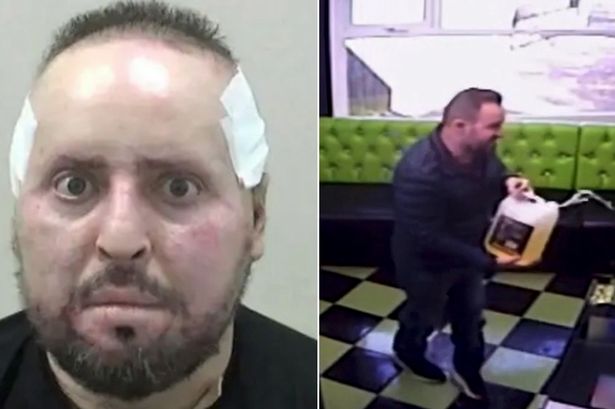The shocking incident at a Newcastle barber shop, where Dilovan Sindi set himself and another man ablaze, unfolded as a horrific act of revenge following Sindi’s dismissal over theft allegations. The resulting inferno left Sindi dead and his victim, a fellow barber, with catastrophic burns that permanently altered his life. This tragic event highlights the devastating consequences of unchecked anger and the profound impact such violence can have on individuals and the community. This detailed examination will delve into the circumstances surrounding the incident, explore the motivations behind Sindi’s actions, analyze the legal ramifications, and discuss the broader implications of workplace violence and its devastating impact on victims and their families.
Sindi’s actions stemmed from a deep-seated resentment following his dismissal from the barber shop. Allegations of theft had led to his termination, a blow to his pride and livelihood that fueled a burning desire for retribution. This sense of injustice, perceived or real, festered and ultimately culminated in the horrific act of self-immolation and the attempted murder of his former colleague. The intensity of his anger and the drastic measures he took underscore the profound psychological impact of job loss and the dangers of unresolved workplace conflict. His choice to involve another individual in his suicidal act speaks to a profound disregard for human life and an intent to inflict maximum pain and suffering as a final act of vengeance. This analysis will further explore the psychological factors that may have contributed to Sindi’s extreme reaction.
The physical and emotional scars left on the surviving victim are immeasurable. Described as being “half a person” following the attack, he faces a lifetime of physical challenges, including extensive reconstructive surgeries, ongoing pain management, and the constant reminder of the traumatic event. Beyond the physical trauma, the psychological impact of such an experience can be equally devastating, leading to post-traumatic stress disorder, anxiety, depression, and a profound sense of fear and insecurity. The victim’s life has been irrevocably altered, impacting his ability to work, maintain relationships, and enjoy everyday activities. This examination will further delve into the long-term effects of burn injuries and the challenges faced by burn survivors.
The legal implications of this case are complex and multifaceted. While Sindi’s death effectively concludes any criminal proceedings against him, the incident raises questions about the responsibility of employers in managing workplace conflict and ensuring the safety of their employees. Could the barber shop have done more to mitigate the risk of violence following Sindi’s dismissal? Were there warning signs that were overlooked? These questions highlight the importance of proactive measures to address workplace grievances and provide support for employees experiencing emotional distress. Further investigation into the legal aspects of this case will consider potential civil liabilities and the responsibilities of employers in preventing workplace violence.
This tragic incident serves as a stark reminder of the devastating consequences of unchecked anger and the importance of addressing workplace conflict constructively. It underscores the need for effective communication, conflict resolution strategies, and support systems within workplaces to prevent such tragedies from occurring. Furthermore, it highlights the need for greater awareness of mental health issues and the importance of providing access to mental health resources for individuals struggling with emotional distress. This analysis will explore the broader societal implications of workplace violence and the need for preventative measures to create safer and more supportive work environments.
Finally, the focus must shift to the surviving victim and his long road to recovery. The physical and emotional scars he bears will require ongoing medical care, psychological support, and the unwavering support of his family and community. His story serves as a testament to the resilience of the human spirit and the importance of compassion and empathy in the face of tragedy. This concluding section will emphasize the importance of providing comprehensive support for victims of violence and promoting a culture of understanding and respect within workplaces and society as a whole. It will also explore the role of community support in aiding the recovery process and fostering a sense of hope and healing.














